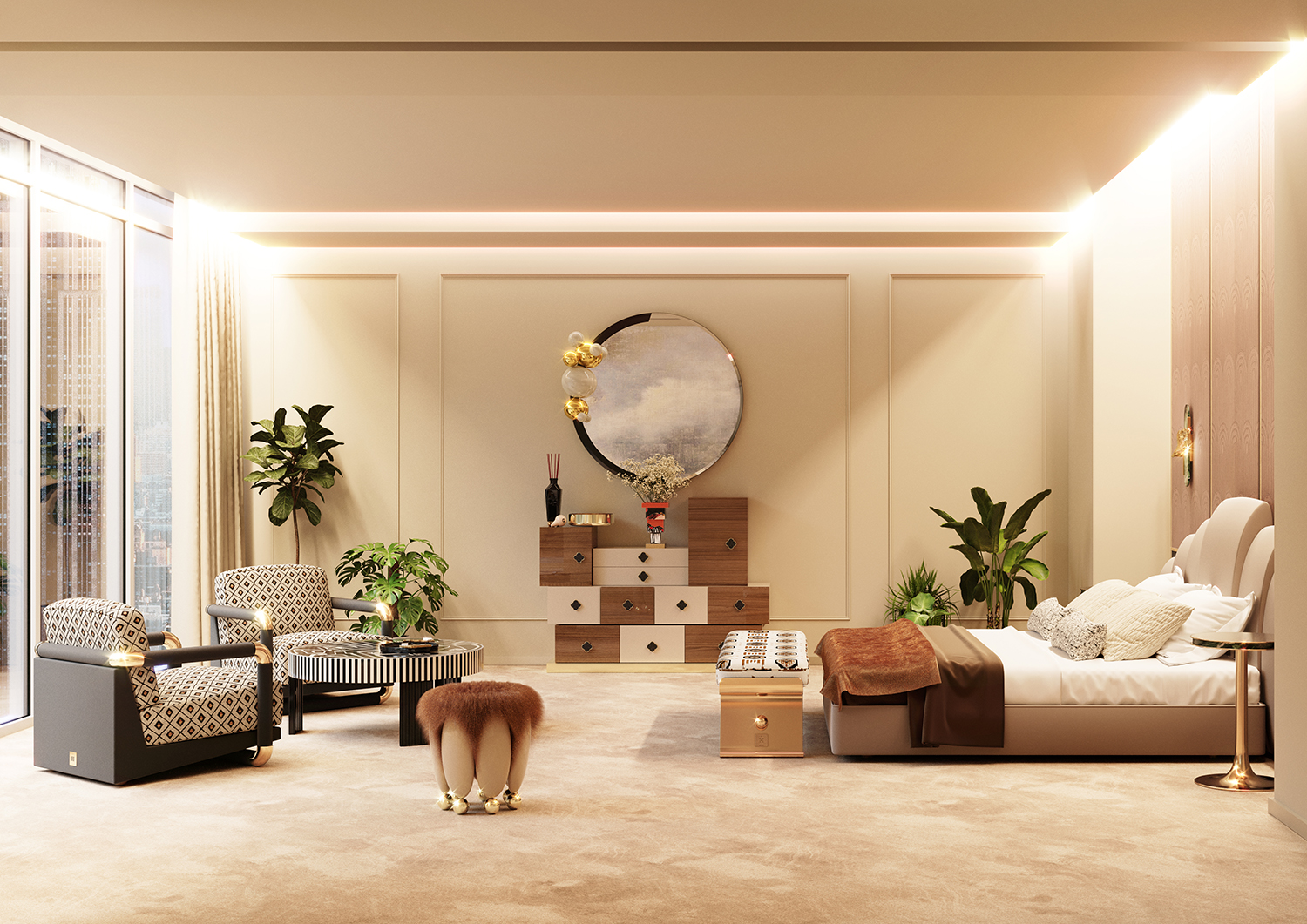Enhance your space with timeless luxury interior design.
Enhance your space with timeless luxury interior design.
Blog Article
Change Your Home With Crucial Principles of Inside Layout and Aesthetics
By recognizing the influence of color concept and the value of structure and patterns, one can create rooms that are not just visually enticing however also deeply individual. Accomplishing this equilibrium entails even more than mere decor; it includes a calculated setup and an eager understanding of exactly how each element engages within a room.
Understanding Shade Theory
Shade theory is a fundamental element of interior decoration that substantially influences mood, perception, and general aesthetic. Comprehending the principles of color concept enables developers to create rooms that resonate psychologically with residents while meeting functional needs (miami luxury interior design). Colors can be categorized right into three main kinds: primary, second, and tertiary. Each category plays a vital role in establishing consistency within an area.
The psychological impact of colors is extensive; warm colors such as reds and oranges stimulate power and warmth, while cool tones like blues and greens promote calmness and peace. The usage of corresponding colors improves visual rate of interest, producing striking contrasts that can elevate an area's allure.
Neutral colors, on the other hand, function as a flexible background, allowing various other style elements to shine. It is vital to think about variables such as lighting and the space's objective when picking a shade scheme, as these can modify the understanding of shades throughout the day.
Ultimately, a well-considered color pattern can change an area, cultivating a feeling of convenience and design that aligns with the occupants' preferences. Mastery of shade concept is, for that reason, a crucial ability for any kind of indoor designer intending to produce unified and inviting settings.
Accomplishing Equilibrium in Design
Exactly how can developers attain a feeling of stability in their areas? Accomplishing balance in layout is essential to producing harmonious insides.
Unbalanced equilibrium, on the other hand, depends on varying aspects that still attain a cohesive look. This strategy enables more dynamic and casual arrangements, giving interest while preserving balance. By very carefully picking differing dimensions, shades, and textures, developers can produce an aesthetically engaging room that really feels balanced yet energetic.
Radial equilibrium stresses a central centerpiece with components radiating outward. This design is generally seen in circular designs, where furnishings and decor produce a natural border that attracts the eye internal.
Inevitably, accomplishing equilibrium calls for thoughtful consideration of scale, percentage, and the partnerships in between components. miami interior design. By masterfully applying these equilibrium concepts, designers can transform spaces into environments that feel both cosmetically pleasing and functionally harmonious, improving the general experience for residents
Importance of Spatial Recognition

A keen sense of spatial awareness allows developers to identify focal factors within a room, guiding the visitor's focus to crucial functions while maintaining a total feeling of unity. It why not check here also helps in the critical placement of illumination, which can considerably influence the perception of area and mood. Additionally, understanding spatial view it now relationships allows the designer to accommodate the certain needs of residents, making certain that each location serves its intended objective without endangering appearances.
Inevitably, spatial recognition is critical for taking full advantage of the potential of any indoor space. By thoroughly considering the interaction between dimensions, format, and feature, designers can produce atmospheres that not just satisfy useful needs yet likewise evoke a sense of comfort and appeal, boosting the total living experience.
Including Structure and Patterns
Embracing a diverse array of textures and patterns can considerably improve the aesthetic and responsive appeal of an indoor room. The critical use different products-- such as timber, steel, material, and stone-- produces depth and rate of interest, making a space feel a lot more inviting and vibrant. For instance, combining smooth surfaces with rough structures can develop a balance that attracts the eye and engages the detects.
When integrating patterns, think about both range and repetition. Huge patterns can work as prime focus, while smaller, refined layouts can enhance other aspects without frustrating the space. Layering patterns, such as pairing flower pillows with candy striped throws, adds intricacy and a sense of consistency if performed attentively.
It is also essential to keep a cohesive color combination, making certain that textures and patterns interact as opposed to compete for attention. By choosing a few vital appearances and patterns, you can produce an unified visual that reflects your personal design while enhancing the general ambiance of the area. Ultimately, the careful unification of these elements can transform a mundane space right into an innovative setting abundant with personality and warmth.
Individualizing Your Room
Producing an area that shows your individuality is vital to accomplishing a truly welcoming atmosphere. Customization in interior decoration permits you to infuse your special design and rate of interests right into your home, transforming it from a simple shelter right into a sanctuary that talks with who you are. Begin by picking a shade palette that resonates with your feelings-- bold shades can energize, while soft tones use peace.
Incorporate art work and decor that reflect your interests, whether it be traveling, nature, or abstract principles. Presenting individual collections, such as books, photos, or mementos, can stimulate valued memories and produce centerpieces within an area. Furthermore, take into consideration personalizing useful items, like upholstered furniture, to straighten with your visual choices.

Conclusion
To conclude, the improvement of a home via the necessary concepts of indoor layout and appearance demands a detailed moved here understanding of color concept, equilibrium, spatial recognition, texture, and customization. Each element contributes dramatically to creating an unified and practical living environment - miami interior design. By attentively integrating these concepts, individuals can boost the aesthetic appeal and emotional vibration of their spaces, inevitably promoting a home that shows unique identities while providing comfort and practicality
Report this page